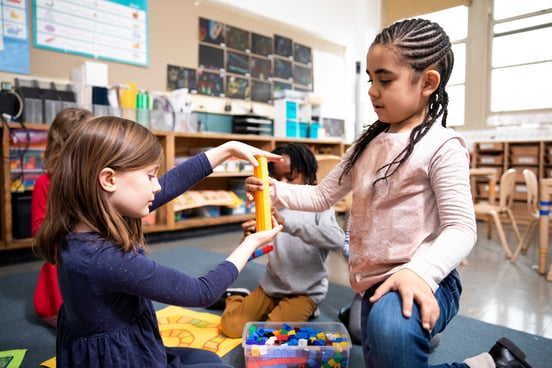
Math Assessment in California Schools: The Shift Toward Differentiated Instruction
Math assessment in California is changing. What used to be a compliance exercise or reporting tool is now becoming a...
ALI Staff | Published April 05, 2024
At the start of the school year, teachers have the chance to create a math classroom where every student feels valued and capable of succeeding.
This environment is built on purposeful actions and strategies, emphasizing that math is a subject everyone can excel in and enjoy. It's about setting up a classroom where students work together, share ideas openly, and see math as a positive and collective experience.
Creating such a classroom requires careful planning, clear communication, and a focus on building confidence and cooperation among students.
This approach helps to establish a learning space where students are encouraged to participate, ask questions, and support each other's understanding of math. It's also a part of the recipe for an effective math classroom.
Let's delve into how teachers can foster this kind of inclusive and supportive math classroom, ensuring every student feels included and engaged from day one.
In this blog, we’ll break down:

In a math community, students support each other's learning and view math as a collective project.
Each student is a critical member, contributing to and benefiting from the group's overall knowledge and skills.
Key characteristics of a math community include:
In this type of classroom, every student gets to see math through the eyes of their peers, making their own understanding deeper.
Let’s now look at how this approach not only changes their view on math but brings broader benefits to their academic and social development.
While ensuring a strong classroom math community helps students grasp complex concepts and improves performance, its social benefits are equally significant.
Students learn to work with others, listen actively, and communicate their ideas clearly. They also learn to trust their peers and value different perspectives, which is essential for well-rounded development.
A strong math community shapes how students identify with math. It breaks the stereotype that math is a subject for the few and shows every student that they have a place in the world of numbers.
When students feel like they belong to a math community, they are more likely to take on challenges, enjoy the learning process, and see math as a valuable part of their lives.
This helps cultivate a mathematical identity. Students are empowered to approach math with confidence and curiosity both now and in the future.
To build a culture of community in a math classroom you need to do more than just hope for it.
It requires thoughtful, deliberate action to support your students and strategies that foster inclusivity, collaboration, and mutual respect.
Here are practical tips to foster inclusivity, collaboration, and mutual respect to create a learning community.
When you implement these strategies, you will create a math classroom where every student feels valued and empowered to learn.
A strong community not only improves academic outcomes but also builds the social and emotional skills students need to succeed both inside and outside the classroom.
Building a math community in the classroom is about more than mastering numbers; it's about students growing together, supporting each other, and becoming more confident learners at every age.
Each school stage has its own community focus to help students reach these goals.
In elementary grades, the community focus is on creating a welcoming space where math is a group adventure and every student feels included.
These strategies ensure that elementary students associate math with positive group experiences, setting the foundation for a lifelong appreciation of math.
In middle school, the community-building aspect of math focuses on collaboration and the understanding that everyone's input is crucial to group success.
This approach solidifies for middle schoolers that their math class is a place where everyone works together and relies on one another.
In high school, the community focus shifts to using collective wisdom to solve complex problems and prepare for the real world.
These high school strategies promote a math community that prepares students to use their collective math skills for success in college, careers, and community life.
With these strategies, you’re set to build a math community where every student’s ideas are heard and where challenges become opportunities for teamwork.
Start applying these tips in your classroom and watch students grow not just in their math skills but also in their ability to work together.
What will be your first step?

Math assessment in California is changing. What used to be a compliance exercise or reporting tool is now becoming a...

You know the moment: a student’s eyes light up when the science experiment fizzes or the math puzzle helps them...

STEM classrooms are full of different types of learners in the classroom, each with their own strengths and needs.
...